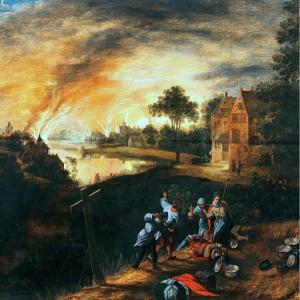Oil on panel of 65 cm by 50 cm
Old frame of 77 cm by 62 cm
The artist evokes an episode of the wars of religion which shelled all the 16th century. Here we see peasants who seem to take revenge on soldiers who are certainly guilty of having burned down their village. It is an oil on unparqueted panel, composed of two oak planks which bear the marks of the Pannetier and the Antwerp guild on the back. The painting bears two panel marks on the reverse. The cloverleaf refers to panel maker Michiel Claessens (1590-1637). The hallmark of the Guild of Saint Luke, Antwerp, with two hands above a castle, is used from 1617 and indicates the approval of the panel by the dean of the Antwerp Guild of Saint Luke. The artist takes up a work by Gillis Mostaert by giving it another landscape and adding many variations. Louvre Museum, Paris, (inv. no. MNR 545).
Gillis Mostaert the Elder (1528; 1598)
Flemish painter and draftsman active in Antwerp in the second half of the 16th century. He is a versatile artist who works in various genres including landscape, genre and history painting. Gillis Mostaert is known in particular for his winter landscapes, his scenes of often nocturnal fires which were among his most sought-after works of his time. Which is still the case today. The artist ran a large studio in Antwerp which supplied works to prominent patrons. He signed few of his paintings. Mostaert. He seems to have worked mainly for private clients to whom he provided images in a wide range of subjects, market, fair and village scenes, allegories of the four seasons, winter and snow landscapes, scenes of war, hell and burning houses, religious subjects as well as parables and allegories. Mostaert is believed to have played an important role in the development of genre and landscape art in Antwerp, through his scenes illustrating the activities of contemporary people by means of the many small figures in his compositions. Mostaert's "fire paintings" were listed in the inventories of important collectors in the late 16th and early 17th centuries. Scenes depicting the destruction of Sodom and Gomorrah and the burning of villages at night gave the artist an opportunity to show his skill in rendering the effects of light and fire. One of his masterpieces in this genre is the Landscape with marauding soldiers (1569, Louvre) which inspired our artist. This composition offers a night view of a landscape with a river and at least 8 fire sources stretching across the entire horizon. The fires were likely started by soldiers, some of whom are attacked by villagers in retaliation. The villagers seem to have gained the upper hand over the soldiers, some of whom are shown in the foreground lying on the ground under the threat of being killed. Loot including shiny pots and pans and faggots is likely to be scavenged by villagers.




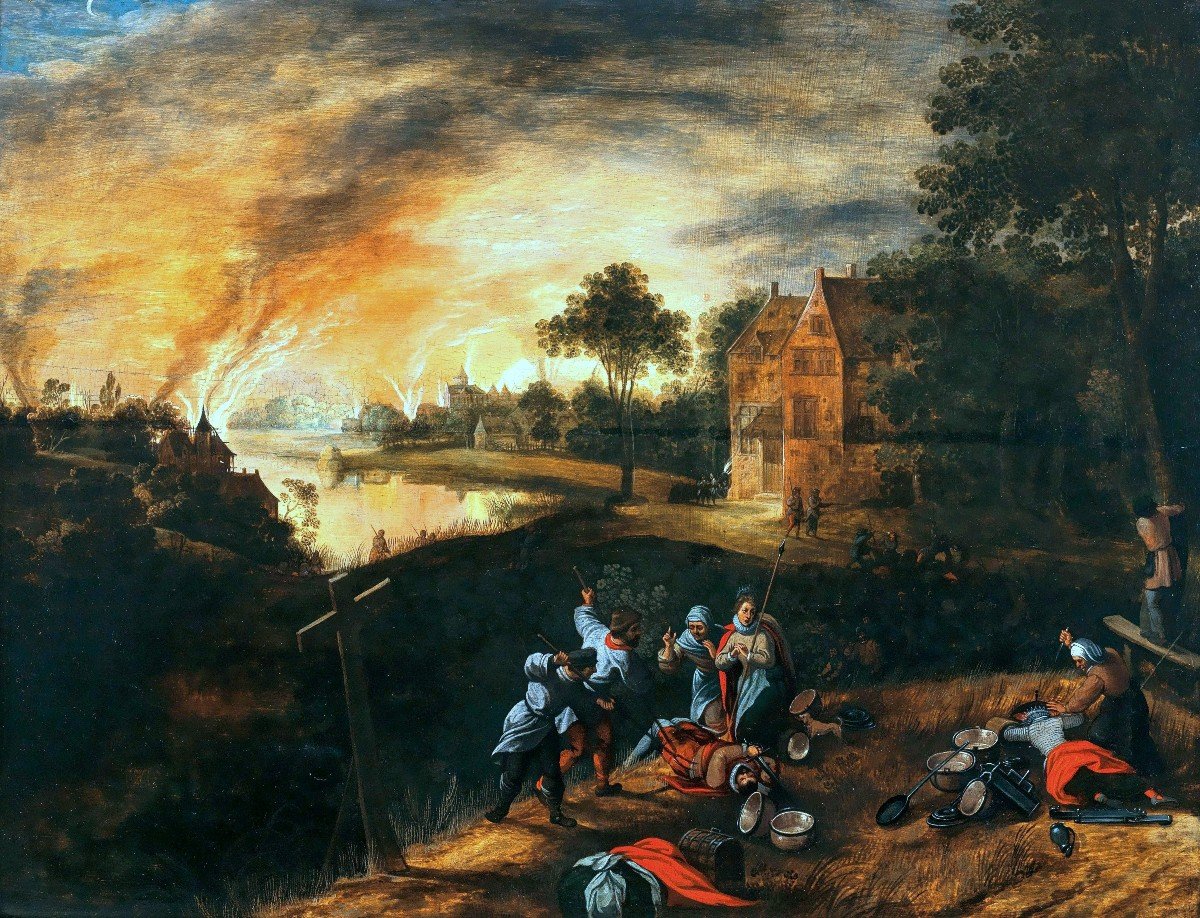

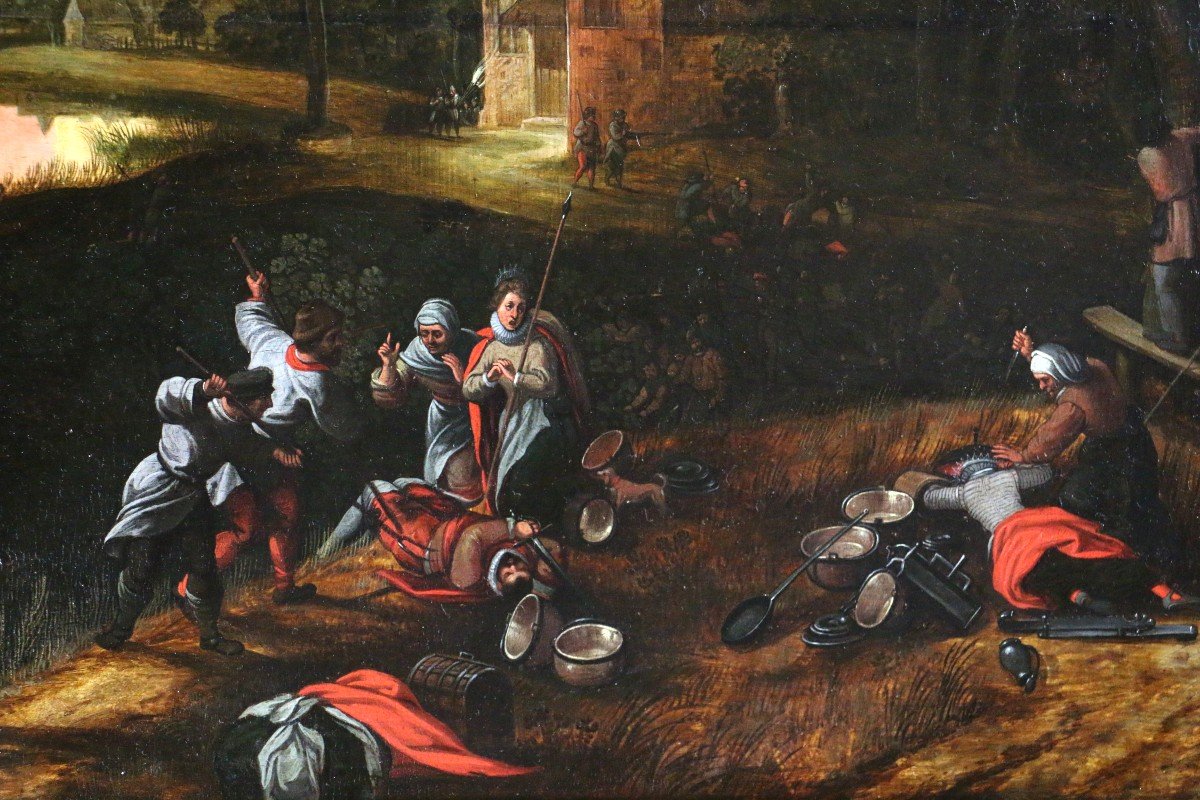




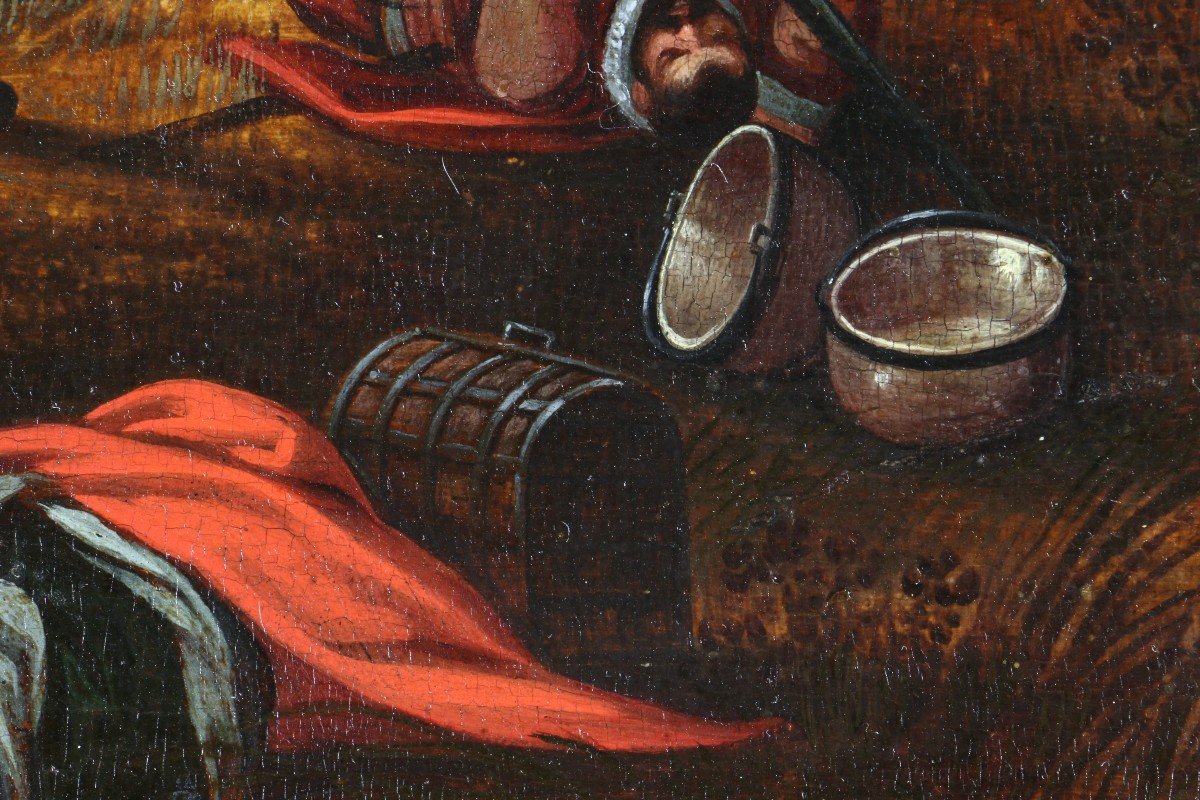

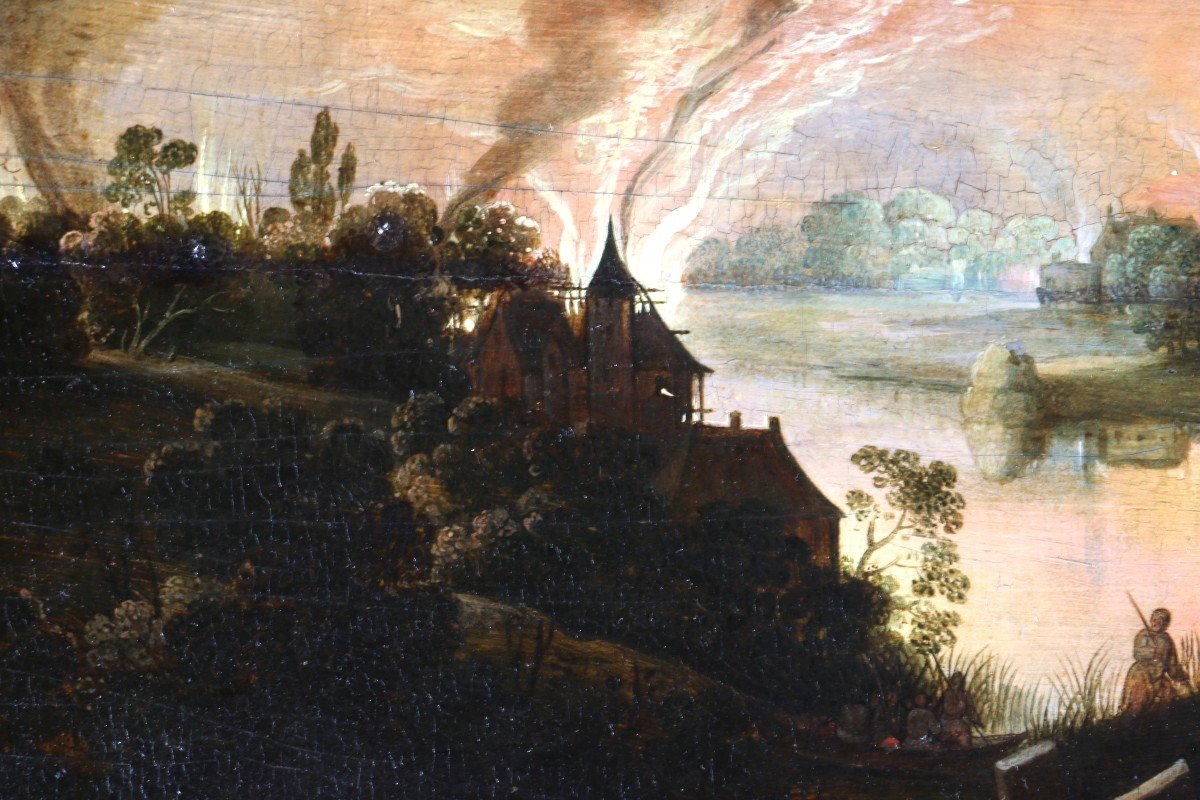

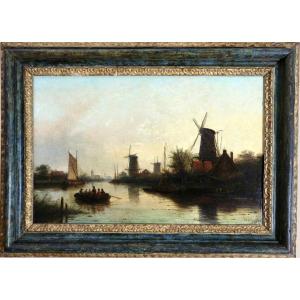














 Le Magazine de PROANTIC
Le Magazine de PROANTIC TRÉSORS Magazine
TRÉSORS Magazine Rivista Artiquariato
Rivista Artiquariato
